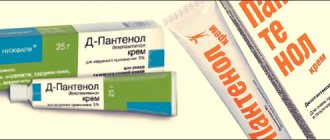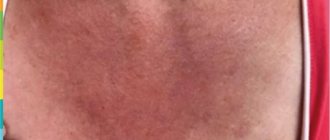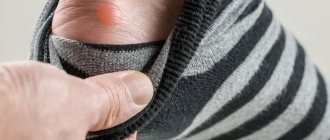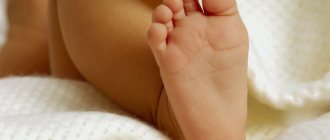Although ginger is commonly used in savory dishes, it can also work wonders as a folk remedy for treating acne, acne scars, and a variety of medical problems (blood pressure, colds, nausea, etc.).
Since ancient times, this natural product has been added to lotions, creams, tonics and scrubs. Today you will learn how to get rid of acne using ginger face masks at home.
What are acne
Acne is a rash that appears on the skin. These are symptoms of a condition called acne. The reasons for this phenomenon are inflammation of the skin, accompanied by blockage of the sebaceous ducts. However, acne often has underlying physiological problems.
In dermatology, acne is called comedones, of which there are two known types. Blackheads are open comedones. The sebaceous secretion thickens and darkens. There are different points of view on the reason for the change in its color:
- chemical reaction - oxidation of sebum;
- external pollution;
- the effect of melanin.
Closed comedones do not have an outlet, although they cannot be called completely subcutaneous. They are characterized by a white color and a softer (sometimes liquid) consistency.
Acne appears on the back, chest and face. The T-area is especially affected: the chin, nose and forehead.
The symptoms of rosacea, although colloquially referred to as rosacea, are not. They are caused by dilation of blood vessels on the skin of the face - this is not associated with blockage of the sebaceous glands.
Acne symptoms
The disease begins with the appearance of inflammatory elements on the skin of the back, face, shoulders, chest, which can take the form of nodes, pustules, or white and black dots (non-inflammatory acne)
The skin becomes oily, dirty, inflamed . When you squeeze out pimples on your own, scars and erosions remain in their place. Patients whose blood contains an increased amount of male sex hormones may experience other symptoms (early baldness, increased body hair, early puberty). When acne gets a secondary infection, the inflammation intensifies.
The appearance of acne in adolescents is often accompanied by psychological problems, the development of increased anxiety and depression.
Classification of acne
Dermatologists distinguish three forms of the disease. They correspond to characteristic types of acne:
- The mild form is comedonal formations. These are the blackheads themselves.
- Moderate form - papular-pustular formations. Pus appears in the clogged pore and nodules form.
- Severe form - subcutaneous formations. They are the most difficult to get rid of, and without proper treatment, scars may remain on the skin.
The forms of the disease are also classified according to the degree of spread. With first degree damage, acne is observed on one or two areas of the face. In the second case, comedones move to the body, and single papules appear. In the third, the rash consists mainly of papules and pustules. The fourth degree is characterized by painful subcutaneous nodes and scars.
Reasons for appearance
Skin inflammation with such unpleasant symptoms is caused by two groups of factors: dermatological and endocrinological. The first is associated with an excessive increase in male hormones androgens (especially testosterone). Therefore, acne appears on the face and body:
- during puberty;
- before menstruation;
- during pregnancy;
- after an abortion;
- for diseases accompanied by hyperandrogenism (for example, polycystic ovary syndrome).
Dermatological causes include hyperkeratosis (pathological acceleration of the division of horny skin cells) and hypersecretion of the sebaceous glands. Cosmetics with a thick texture can clog pores.
You can provoke the appearance of new acne if you get rid of old ones by squeezing. The resulting wound becomes infected, causing inflammation of the skin. The rash quickly spreads over a large area.
Causes of acne
The main causes of acne are:
- adolescence, when the body goes through puberty;
- stress, nervous tension;
- weakening of immune defense;
- hereditary predisposition;
- hyperactivity of the sebaceous glands;
- side effects from taking certain medications;
- diseases of internal organs (gastrointestinal tract, nervous system, kidneys and a number of others);
- changes in the properties of sebum, when it becomes too thick and dense, which leads to blockage of the ducts and the formation of acne;
- poor nutrition;
- poor skin hygiene;
- use of expired, low-quality cosmetics that are not suitable for this skin type;
- digestive problems;
- hypovitaminosis.
The combination of factors that lead to acne may vary depending on the individual characteristics of the body.
Ways to get rid of acne
Acne is just a symptom, so simply getting rid of the acne is not enough. First of all, comprehensive treatment of the disease that gave rise to them is required. Most often this is a correction of hormonal levels. If the nature of acne is dermatological, the following measures will help:
- elimination of hyperkeratosis;
- normalization of the process of exfoliation of the stratum corneum of the epidermis;
- suppression of increased sebum production;
- medicinal sanitation of the skin (including antibacterial treatment) to remove inflammation;
- correction of the structure of the upper layer of the epidermis to remove scars.
It is useful to change the usual regimen of daily skin care for the face and body, since acne indicates its low effectiveness. You may have to give up your usual cosmetics.
Diagnosis of acne
Making a diagnosis is not difficult; a visual examination of the patient is enough for the doctor. In order to identify the causes of acne formation, additional examinations may be prescribed:
- blood test (general) – reveals signs of inflammation in the body;
- blood test for hormones;
- blood test (biochemical);
- analysis for intestinal dysbiosis - if this diagnosis is confirmed, treatment for the disease is prescribed; after recovery, acne usually also disappears;
- analysis of the contents of pimples - carried out when a secondary infection occurs to determine the type of pathogen and its sensitivity to antibiotics.
Acne treatments
They get rid of acne using various means and methods. They are selected individually, taking into account the patient’s medical history: his age, hormonal levels, the presence or absence of dysbacteriosis, and the need for vitamins.
Acne is often accompanied by a change in the ratio of beneficial and harmful microflora in the body - dysbacteriosis. Therefore, patients often develop intestinal problems that also need to be treated.
A medicinal complex to get rid of blackheads may include:
- antiseptic drugs;
- antibiotics for external and internal use;
- systemic retinoids;
- drugs that normalize testosterone levels;
- metabolism;
- vitamins.
Physiotherapy is also effective as an additional area of treatment and elimination of cosmetic defects. The following methods are actively used: cryotherapy, phonophoresis, mesotherapy. Scars are removed using circular dermabrasion.
Oak bark and calamus
Thanks to its amazing drying properties, it is an excellent tool in the fight against acne, and a whole range of beneficial properties helps reduce the time it takes to eliminate the problem.
To combat acne, there are a sufficient number of recipes, each of which is effective. The simplest and yet most effective remedy: crushed oak bark (4.5 grams) and calamus (50 grams), which should be placed in a container and pour boiling water (200 ml).
The resulting slurry is sent to simmer in a water bath for 1 minute. This drug can be used in the form of lotions, and if you dilute it slightly with boiled water, the decoction will also be effective when washing.
Rules for facial skin care
If your skin is prone to comedones, you need to take care of it more carefully. The main goal is to soothe the sebaceous glands and prevent clogged pores. To do this you need:
- Ensure sufficient cleansing. Standard washing is not enough to get rid of excess oil. You need to wipe problem areas (nose, forehead, chin) with lotion or micellar water at least twice a day.
- Apply the correct cream. A moisturizer containing keratolytic (exfoliating) and antibacterial ingredients will do.
- Avoid alcohol-containing products. The first time after application, they provide the desired drying effect. But in the future they upset the balance of microflora and remove the necessary fluid.
Although acne on the nose or other areas of the face may look unattractive, you should not try to remove it yourself. It is important to break the habit of squeezing pimples to avoid infection and worsening the problem.
Rules for caring for the skin of the chest and back
Acne appears on the back and chest no less often than on the face. This is not so striking, but requires no less responsible skin care. If she is prone to oiliness, it is worth increasing the frequency of bathing procedures. It is advisable to shower twice a day - in the morning and before bed.
In the absence of rashes, it is better to clean your back with a washcloth or medium-hard sponge. During an exacerbation, it is better to prefer softer options to avoid microtraumas.
After cleansing of excess sebum, sweat and dead particles of the epidermis, you can move on to special products:
- scrubs to exfoliate excess stratum corneum;
- thermal water for hydration;
- soft peelings;
- creams enriched with vitamins A and E.
When acne appears, it is recommended to remove synthetic items and wear natural fabrics. It is better to choose loose clothing: tight and constricting ones contribute to clogging of the follicles.
How to get rid of acne quickly
This question often plagues people for whom impeccable appearance is important. Sudden pimples that appear before an important event (a date, an interview, a photo shoot) become a serious irritant for them that needs to be promptly eliminated.
Dermatologists never tire of repeating: squeezing out acne is unacceptable. It’s still not possible to get rid of an unwanted defect. An unpleasant wound will appear at the site of the pimple. If it gets infected, its appearance will suffer even more.
At home, you can only relieve inflammation in order to reduce the tubercle and speed up its healing:
- use SOS products specifically for problem skin;
- make a mask with tea tree or aloe extract.
You should not try to get rid of blackheads using tinctures or non-specialized products. This can cause allergies or cause even more redness.
Is it possible to rid your face of acne forever?
Normally, this problem should not arise after puberty. No one has yet been able to completely get rid of the risk of acne. From time to time, any person may experience hormonal imbalance or accelerated production of sebaceous glands. But this happens sporadically.
Typically, acne is viewed as a lingering problem caused by an endocrine disorder or hyperkeratosis. It cannot be solved on its own. But if the cause is eliminated, you will also get rid of the unpleasant consequence.
The only group of people for whom the problem is practically impossible to solve are those whose acne is of a genetic nature. Careful skin care and prevention of endocrine diseases help reduce the extent of damage.
Acne treatment
Therapy should be comprehensive and aimed not only at eliminating acne, but also the causes of its occurrence. This is the only way to achieve lasting results and avoid the recurrence of acne.
To remove acne, cosmetic facial cleansing is performed. In addition, it is necessary to put the hormonal balance in order, start taking multivitamins to improve the condition of the skin, and cure the main pathologies that caused acne.
Effective remedies for getting rid of acne are salicylic acid, chamomile extract, vitamins A, B, C, zinc oxide, green tea extract.
With their help, you can reduce the process of sebum production, reduce skin inflammation, and avoid further blockage of the sebaceous glands. In addition, the above drugs have an antibacterial effect.
All medications for the treatment of acne are divided into systemic and local drugs.
Systemic means include:
- antibiotics – the course of treatment for acne lasts 2-3 months; only the attending physician can prescribe drugs of this group;
- hormonal drugs - indicated if the formation of acne is caused by an increased level of male sex hormones in the patient’s blood;
- retinoids are very strong drugs that are used only as a last resort, when all other treatment methods have failed, therapy is carried out under the supervision of the attending physician, self-medication is unacceptable and can lead to the development of a number of serious complications.
Local remedies include:
- antibacterial drugs;
- azelaic acid preparations – inhibit cell division, which prevents blockage of the sebaceous passages, and have a pronounced antibacterial effect.
In addition, cosmetics (washing gels, antibacterial soap and a number of others), as well as hardware techniques, are used to treat acne.











